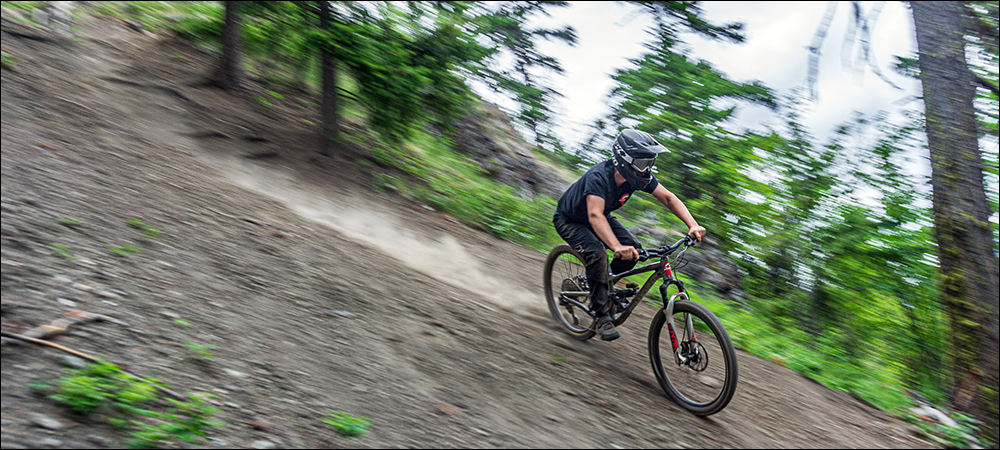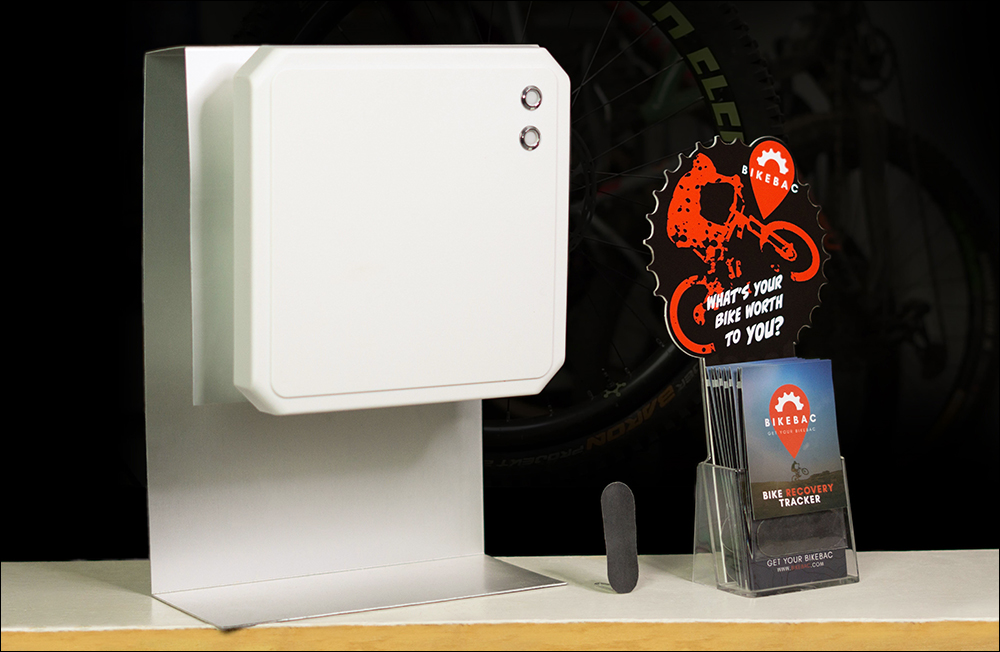Bikebac, a science and technology company initiated by three bicycle enthusiasts, has launched an RFID-based system to help bicycle owners track and retrieve stolen bicycles. This solution, called Bikebac Tracker, was developed to return the stolen bicycle to its legitimate owner, provided that the bicycle was detected by an RFID reader installed at the entrance and exit of the bicycle store.
This RFID solution was launched in May 2021. Bikebac has been selling this tracker (a sticker that supports UHF RFID) in bicycle stores and online, and it has been deployed in stores in Whistler, British Columbia, Canada. Class reader.
Every bicycle owner will receive a tracker tag, and if their lost bicycle appears in the store, the owner will receive a text message or email reminder that the bicycle has been detected. Then, the system will indicate to them the local authority with the case number, or the store where the bicycle appeared.

The company's co-founders Vincent Grace, Brian White and Brandon Phillips are all avid bike enthusiasts, and all have commercial and technical experience. The three set up the Bikebac company this year to solve the problem of rising bicycle theft rates in their area.
Two bicycles were stolen while Grace was in school. In addition, White also said that although his own bicycle has never been lost, bicycle theft is a very common phenomenon, and the high-priced mountain bikes of several of his friends have also been stolen. In fact, according to statistics from the security software company Project 529, an average of 2 million bicycles are stolen every year in North America.
Vancouver has the highest rate of bicycle theft among major Canadian cities. In 2020, 2115 bicycles were missing. White said this is partly due to the high rate of bicycle use in the region, which has been increasing since the beginning of the COVID-19 epidemic.
Although the police will retrieve about 50% of the stolen bicycles, only about 5% of the bicycles are actually returned to the owner. The reason is simple, because these bicycles do not have any records that facilitate the police to retrieve the owner. For example, the police may find a stolen bicycle during the process of solving a case, or find the bicycle right where it was stolen. Project 529 provides a serialization method to uniquely identify and record bicycles, and Bikebac intends to further develop this method.
Grace is a technical expert. He has experience in using RFID to monitor athletes in trampolines and other sports facilities, as well as experience in network development, so he is familiar with how to build RFID solutions and knows the benefits of RFID. He believes that traditional bicycle tracking systems usually rely on GPS devices, but their cost is often high, and the battery will run out; other products used to track keys or wallets, such as the Lost and Found application, Tile App, are not Designed for theft of bicycles, it also has its own shortcomings.

White said that as for the application of RFID technology, the company took into account the characteristics of most bicycle thieves. Although some thieves’ thefts are improvised crimes, such as stealing a bicycle and then riding away by themselves, in most cases it is an organized crime, such as stealing a large number of bicycles and turning the bicycle into money. Most of the stolen bicycles ended up being sent to the store, where they were either dismantled and sold as parts or resold in their entirety.
"So, if these bicycles later appear in a bicycle store, how do you track them?" White said, "We think RFID is the best tool. It does not require batteries and has a wide range of reading."
The team developed a UHF RFID tag that can be individually attached to the bicycle and reliably transmit the data to the reader. A third-party manufacturer made these RFID tags, and Bikebac designed its own reader hardware using off-the-shelf components, including an RFID reader and antenna, a 4G cellular modem and an embedded computer.
Bikebac owns the ownership of these devices and installs them in bike shops that have agreed to participate in the project. This reader only needs a power supply. The bicycle buyer must first obtain the RFID tag, and then install or hide it on the bicycle. The RFID tag comes with an adhesive backing and can be stuck anywhere on the bicycle frame, or on the inside and outside of the tire. The label is designed to have an independent appearance, and bicycle shops can install it in a protective and invisible way.
In the future, bicycle manufacturers may be able to implant tags directly into bicycle components. Each tag has a one-year reminder service from Bikebac, and users will have to pay an annual fee of $12 over the next few years. They can follow the setup instructions, first scan the QR code provided by Bikebac, register an account, enter the 9-digit code printed on the label, and then add a bike. The company provides videos to guide users to correctly place the label on the bicycle.
Users can provide verification information such as phone numbers and email addresses so that they can be contacted easily when a lost bicycle is detected. The Bikebac reader installed at the entrance of the store will ask for the tag and transmit the tag’s unique ID number to Bikebac’s cloud software, which will automatically send an alert to the registrant of this bike. In addition, the system can also send a case number so that the owner can submit it to the local police, or it can go directly to the bicycle shop to retrieve the stolen car.
Bikebac explained that in order for this project to be successful, the technology needs to be promoted on a large scale in bike shops, and this process is currently being carried out from the Whistler area to other regions.
For bicycle shops, they only need to agree to install the reader, almost no other investment is required, and then Bikebac can own and maintain the reader infrastructure. The main benefit a bicycle shop can get is to provide community services to help combat bicycle theft. In addition, the system also provides a certain financial return. For example, when a store sells the system to customers, Bikebac will receive a portion of the installation and labeling costs, as well as a certain percentage of the annual fee paid by the bicycle owner.
It is said that this technology was deployed at a time when the cost of bicycle ownership became more expensive and more popular than in previous years. The "Sea to Sky Corridor" area in British Columbia is particularly characterized by a large number of bicycle shops. Those who live or visit the area can visit the large playgrounds mainly in the form of Whistler and Blackcomb mountains, as well as the local underground Slope and mountain bike park. Many bicycles in the area sell for between 4,000 and 8,000 US dollars each.
In the long term, the company plans to sell this RFID solution in Canada and the United States. White said, "We are concerned about continued growth. The enthusiasm of bicycle enthusiasts and the increasing rate of theft have promoted the early development of this business. People in the bicycle hobby circle have always been interested in bicycles and are willing to spend 8,000 yuan. US$10,000 and US$14,000 are on their bicycles. Most people I know spend more money on bicycles than on cars. This is where our advantage lies-the passion of bicycle enthusiasts."






